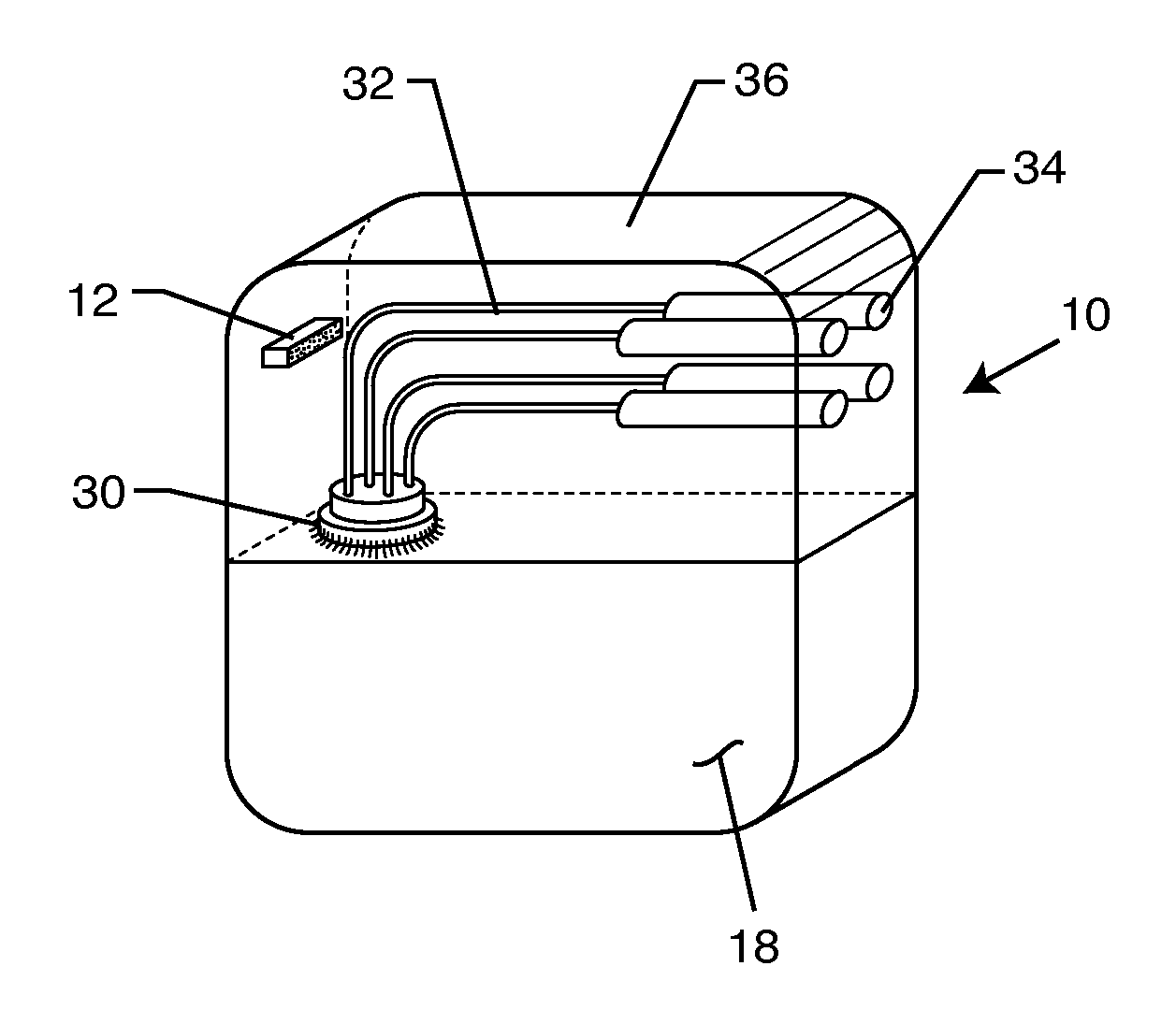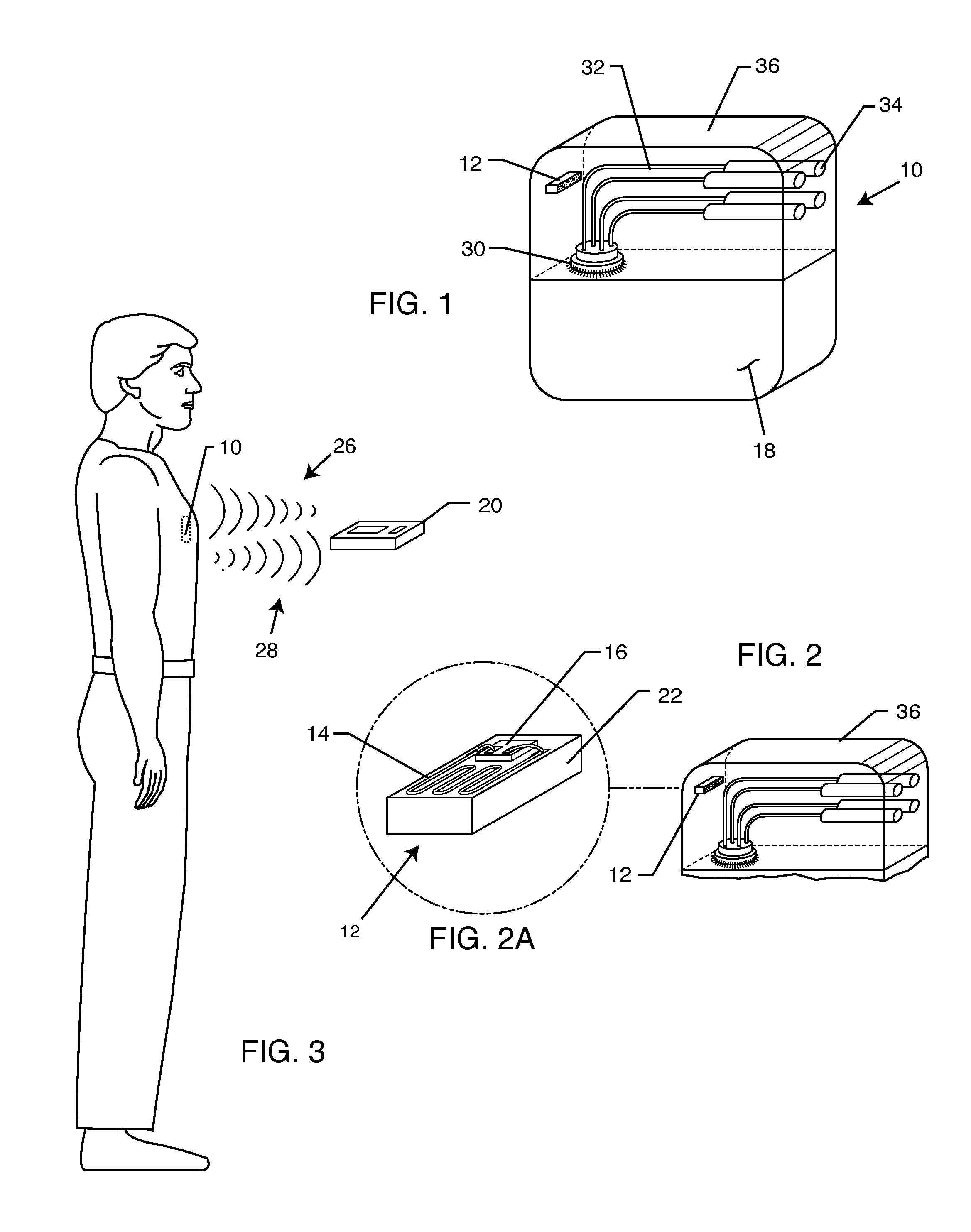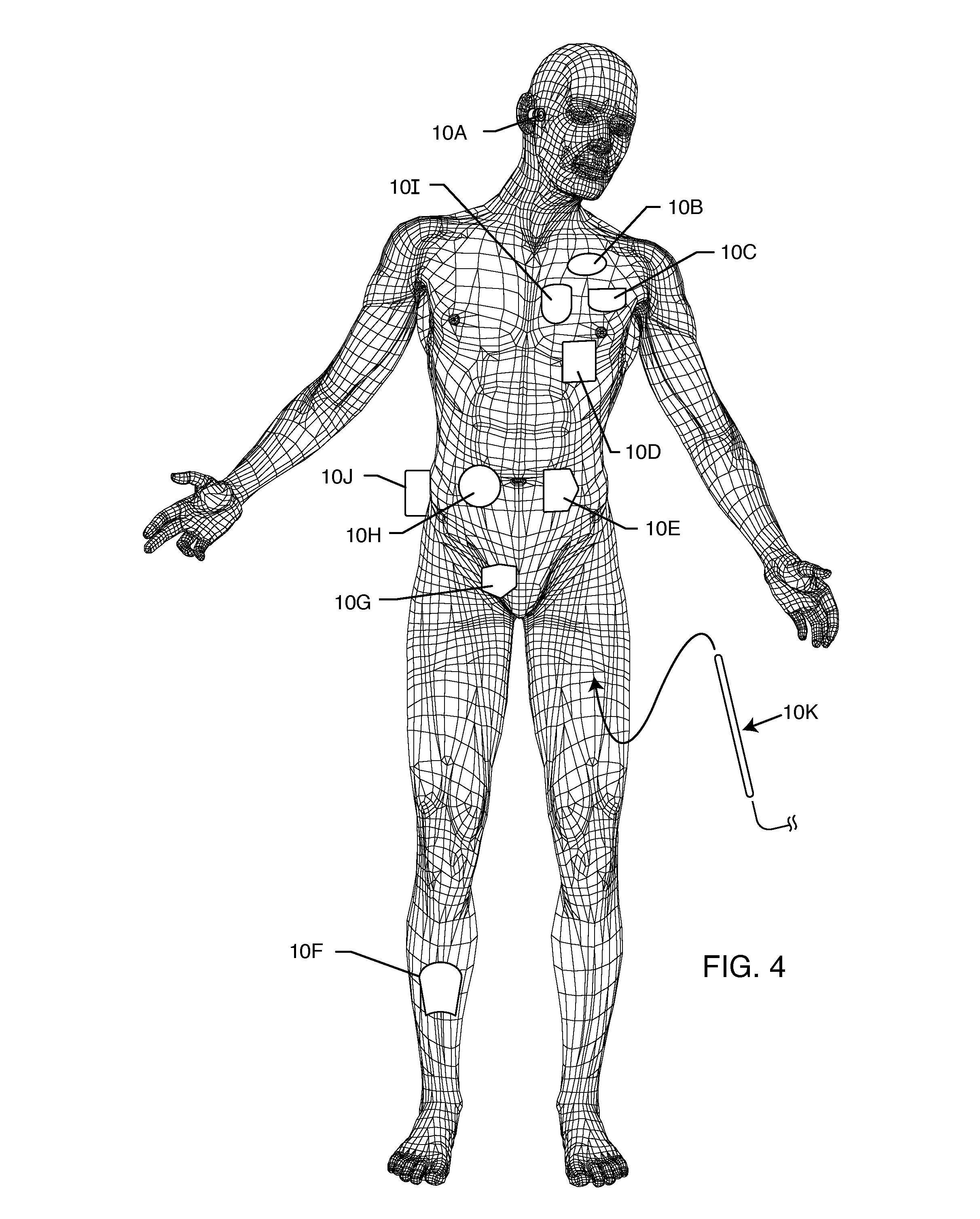RFID detection and identification system for implantable medical lead systems
a technology of implantable medical devices and detection systems, applied in the field of radio frequency identification (rfid) tags, can solve the problems of limited information so provided, serious dilemma for the er, and inability to reliably identify the form of identification
- Summary
- Abstract
- Description
- Claims
- Application Information
AI Technical Summary
Benefits of technology
Problems solved by technology
Method used
Image
Examples
Embodiment Construction
[0066] The present invention is directed to a radio frequency identification (RFID) system for use with active implantable medical devices (AIMDs) and implantable lead wire systems. Specifically, the RFID system comprises an RFID tag implanted in a patient's body and associated with an implanted AIMD or lead wire system, and an interrogator in communication with the RFID tag.
[0067]FIG. 1 is an isometric view of a typical AIMD 10, such as a cardiac pacemaker. Cardiac pacemakers typically have a metallic housing 18 which can be of titanium, stainless steel or the like. This metallic housing 18 is laser welded shut and generally contains a hermetic feedthrough terminal 30 for passage of lead wires 32 into the interior of the metallic housing 18. Said hermetic feedthrough terminals 30 are well known in the art and are generally laser welded into the metallic housing 18 of the implantable medical device. The lead wires 32 as shown in FIG. 1, are generally routed to connectors 34. The co...
PUM
 Login to View More
Login to View More Abstract
Description
Claims
Application Information
 Login to View More
Login to View More - R&D
- Intellectual Property
- Life Sciences
- Materials
- Tech Scout
- Unparalleled Data Quality
- Higher Quality Content
- 60% Fewer Hallucinations
Browse by: Latest US Patents, China's latest patents, Technical Efficacy Thesaurus, Application Domain, Technology Topic, Popular Technical Reports.
© 2025 PatSnap. All rights reserved.Legal|Privacy policy|Modern Slavery Act Transparency Statement|Sitemap|About US| Contact US: help@patsnap.com



